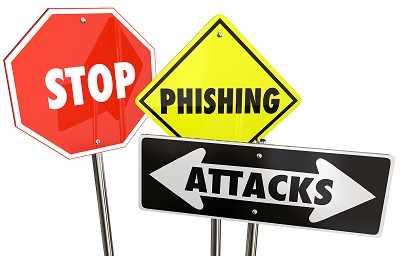Catch the Banking Phish
Phishing is the most prevalent cybercrime in the U.S. It’s also the most used tool for stealing financial account information, opening the door to further financial crimes. Should a criminal access your account, they can open credit card accounts, get government benefits and tax refunds, and take out loans. If your institution sends you emails, knowing the red flags of bank account phishing lets you catch them before they catch you.

Check Sender Email Address
At first glance, an email sender address looks like it’s from your financial institution. That’s how hackers get you to trust and respond to it. Always check the sender address closely, looking for a letter or character that doesn’t belong, or a different domain like .net or gmail.com. If there’s any difference, big or small that doesn’t reflect your financial institution’s exact email address, red flag that phish.
Message Urgency
An email pushing urgency is always a red flag. Hackers say anything in an email that gets you to divulge sensitive account information, and an urgent message helps. They want you to act before you take time to think. Panicked messaging like “Your account was hacked, call this number to find out more” is one example. FYI, the phone number is hacker-controlled, so never use it. The financial institution will call you if there’s really a problem and you can always call them using their legitimate number.
Poor Grammar, Bad Spelling
Where you keep your money is likely a credible business and sending an email with poor grammar and typos isn’t professional. Just one misspelling can tell you something’s not quite right. Should the email also ask for your account information, that’s now two reasons to call it phishing. Add to that, awkward phrases like “Dearest Sir or Madam” tells you the email script was poorly translated. If you see one or any of these signs, send the email packing.
If it Really is Your Lucky Day, Verify it First

If an email appears to be from your bank and notifies you of something too good to be true, remember, it probably is. Emails about a large deposit being made to your account – from a long-lost relative leaving you money, an IRS refund, or some other reason you’ve received unexpected funds – phishing red flags are waving. You can be sure the message demands your account details in order to get the deposit. It’s time to stop, think, and verify before you supply any information. Getting caught up in the moment helps no one but the hacker.
Protecting Your Financial Information
It’s something we all can and should do to protect our hard-earned financial assets. After all, hackers are always improving their methods and we need to do to improve ours too. From using fortified passwords to catching phishing red flags and more, being proactive is the best way to bolster your banking security today and for all your tomorrows.
Opens in new window
PDF Download
Word Download
Excel Download
PowerPoint Download
Document Download
Opens in new window
PDF Download
Word Download
Excel Download
PowerPoint Download
Document Download
Opens in new window
PDF Download
Word Download
Excel Download
PowerPoint Download
Document Download